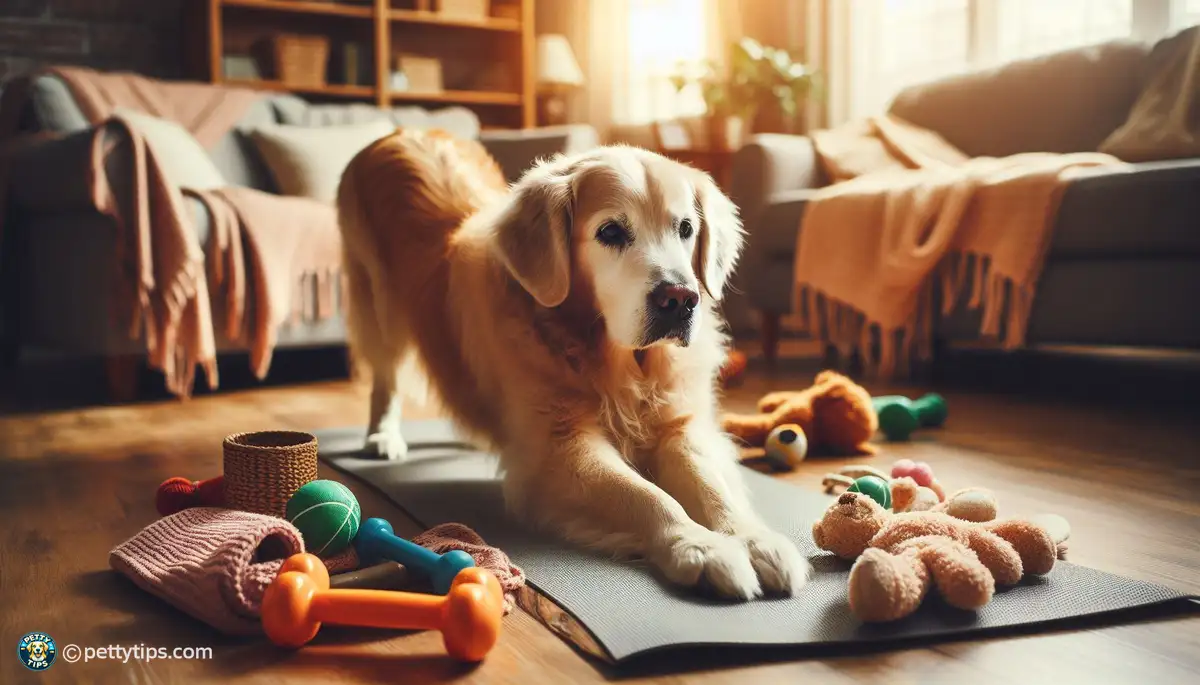
Understanding Dog Yawns: More Than Just Sleepiness
Tânia Rodrigues - Oct 27, 2024 - 8 min read


As our furry friends age, they experience changes in their bodies just like we do. These changes can impact their mobility, flexibility, and overall fitness levels. senior dogs may start to slow down, become less agile, and experience stiffness or joint pain. It's important to understand these changes so we can tailor exercise routines to suit their needs.
Just because a dog is getting older doesn't mean they should become couch potatoes. In fact, regular exercise is crucial for maintaining their health and well-being. Exercise helps senior dogs stay at a healthy weight, strengthens their muscles, improves circulation, and keeps their joints limber. It also provides mental stimulation, which is important for keeping their minds sharp as they age.
When designing an exercise routine for a senior dog, it's essential to take their individual needs and limitations into account. Start with low-impact activities that are easy on their joints, such as walking or swimming. Gradually increase the intensity and duration of the exercises as their fitness level improves. Be sure to include plenty of breaks and listen to your dog's cues – if they seem tired or in pain, it's time to stop.
Walking is one of the best exercises for senior dogs because it's low-impact and can be easily tailored to their fitness level. Aim for short, frequent walks rather than one long walk, especially if your dog is out of shape. Choose flat, even terrain to reduce the risk of injury, and avoid hot pavement, especially in the summer months. Don't forget to bring water and take breaks as needed.
Swimming is another fantastic exercise for senior dogs because it's gentle on their joints while providing a full-body workout. If you have access to a pool or a safe body of water, consider taking your dog for a swim. Just be sure to introduce them to the water gradually and use a life jacket if necessary. Keep an eye on them at all times and never force them to swim if they're uncomfortable.
Balance and coordination exercises can help keep senior dogs agile and reduce the risk of falls. One simple exercise is to have your dog stand on a cushion or balance disc while you gently rock it back and forth. You can also encourage them to walk over obstacles such as low hurdles or balance beams. Start with easy exercises and gradually increase the difficulty as your dog improves.
Puzzle toys are a great way to keep senior dogs mentally engaged and provide them with a fun challenge. Fill a Kong or other treat-dispensing toy with their favorite snacks and watch as they work to get them out. You can also hide treats around the house or yard and encourage your dog to sniff them out. Just be sure to supervise them while they play to prevent choking hazards.
training sessions aren't just for puppies – they're also beneficial for senior dogs. Teaching them new tricks or practicing obedience commands helps keep their minds sharp and strengthens the bond between you. Keep training sessions short and positive, and use plenty of treats and praise to reinforce good behavior. If your dog has mobility issues, you can modify exercises to suit their abilities.
scent work is a natural activity for dogs that taps into their incredible sense of smell. Set up a simple scent trail using treats or toys and encourage your dog to follow it using their nose. You can also hide objects around the house or yard and ask your dog to find them. Scent work is not only mentally stimulating but also provides a great outlet for their natural instincts.
Before starting any new exercise routine with your senior dog, it's essential to consult with your veterinarian. They can assess your dog's overall health and fitness level and provide personalized recommendations. They can also help identify any underlying medical conditions that may affect their ability to exercise safely.
While exercise is important for senior dogs, it's crucial to watch for signs of overexertion. If your dog seems excessively tired, panting heavily, or reluctant to continue, it's time to take a break. Likewise, if they show any signs of pain or discomfort, stop the activity immediately and consult your veterinarian.
As your dog ages, their exercise needs may change, so it's essential to be flexible and adjust their routine accordingly. Pay attention to their energy levels and any changes in their mobility or behavior. If certain activities become too challenging, look for alternative exercises that are better suited to their abilities. Remember, the goal is to keep them active and healthy while respecting their limitations.
In conclusion, keeping senior dogs active is crucial for maintaining their health and quality of life. By incorporating gentle exercises and mental stimulation activities into their routine, you can help them stay fit, agile, and mentally sharp well into their golden years. Just remember to tailor their exercise program to suit their individual needs and always prioritize their safety and well-being. With the right approach, you and your senior dog can enjoy many happy and healthy years together.